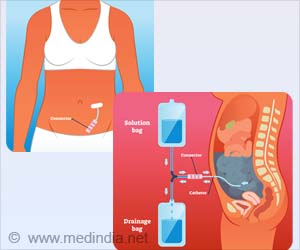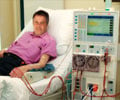![Quiz on Peritoneal Dialysis]()
Introduction:
Peritoneal dialysis (PD) is a type of dialysis that removes waste and excess fluid from the body via blood vessels in the peritoneum, a membrane that lines the inner abdominal wall. This abdominal lining functions as a natural filter.
Peritoneal dialysis is a viable treatment option for end-stage kidney disease patients. It is prescribed for kidney and non-kidney diseases, such as acute pancreatitis,
liver failure, and refractory heart failure (
1✔ ✔Trusted Source
Peritoneal dialysis in renal replacement therapy for patients with acute kidney injury
Go to source).
Use the peritoneal dialysis quiz to familiarize yourself with some fascinating facts about this form of dialysis that one can do at home.
This quiz consists of the following ten questions on peritoneal dialysis that will test the depth of your knowledge:
- Understand more about peritoneal dialysis
- Peritoneum (2✔ ✔Trusted Source
Dialysis: A Review of the Mechanisms Underlying Complications in the Management of Chronic Renal Failure
Go to source)
- Dialysis fluid (3✔ ✔Trusted Source
Peritoneal dialysis fluid
Go to source)
- Dialysis fluid composition (4✔ ✔Trusted Source
Peritoneal Dialysis Fluid and Some of Its Components Potentiate Fibrocyte Differentiation
Go to source)
- Complication of peritoneal dialysis (5✔ ✔Trusted Source
Peritoneal Dialysis-Associated Peritonitis
Go to source)
- Dietary restrictions (6✔ ✔Trusted Source
Peritoneal dialysis
Go to source)
- Automated peritoneal dialysis (7✔ ✔Trusted Source
Automated peritoneal dialysis--actual clinical aspects
Go to source)
- CAPD (8✔ ✔Trusted Source
Continuous ambulatory peritoneal dialysis (CAPD) versus hospital or home haemodialysis for end‐stage renal disease in adults
Go to source)














